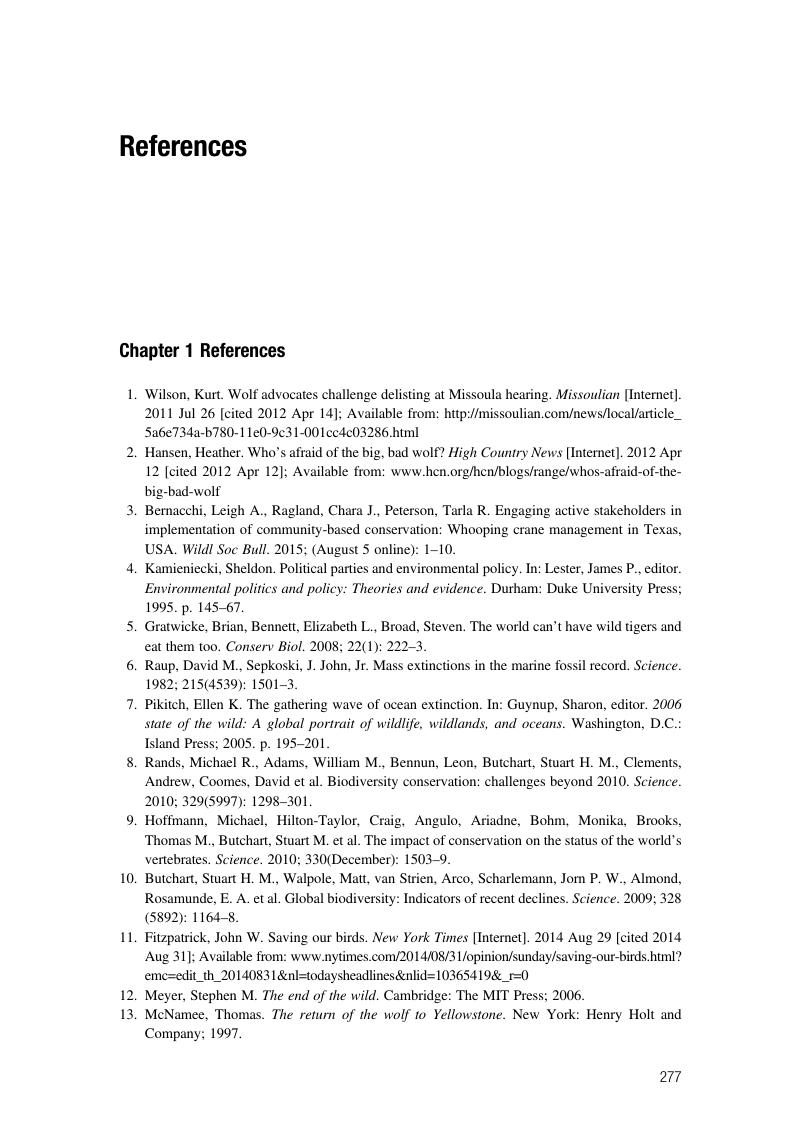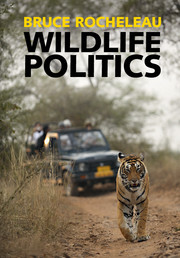Book contents
- Wildlife Politics
- Wildlife Politics
- Copyright page
- Contents
- Preface and Acknowledgments
- 1 An Introduction to Wildlife Politics
- 2 Science and the Protection of Wildlife
- 3 Implementation and Enforcement Issues in Preserving Wildlife
- 4 The Development of U.S. Wildlife Policies and Legislation
- 5 Charismatic Animals, Carnivores, and the Politics of Wildlife
- 6 The ESA: Evaluation and Politics
- 7 Comparative Wildlife Politics
- 8 International Wildlife Politics
- 9 Wildlife Politics, Values, and Ethics
- 10 Hunting and Wildlife Politics
- 11 Tourism: Good or Bad for Conservation of Wildlife?
- 12 Conclusion
- References
- Index
- References
References
Published online by Cambridge University Press: 20 May 2017
- Wildlife Politics
- Wildlife Politics
- Copyright page
- Contents
- Preface and Acknowledgments
- 1 An Introduction to Wildlife Politics
- 2 Science and the Protection of Wildlife
- 3 Implementation and Enforcement Issues in Preserving Wildlife
- 4 The Development of U.S. Wildlife Policies and Legislation
- 5 Charismatic Animals, Carnivores, and the Politics of Wildlife
- 6 The ESA: Evaluation and Politics
- 7 Comparative Wildlife Politics
- 8 International Wildlife Politics
- 9 Wildlife Politics, Values, and Ethics
- 10 Hunting and Wildlife Politics
- 11 Tourism: Good or Bad for Conservation of Wildlife?
- 12 Conclusion
- References
- Index
- References
Summary

- Type
- Chapter
- Information
- Wildlife Politics , pp. 277 - 370Publisher: Cambridge University PressPrint publication year: 2017

